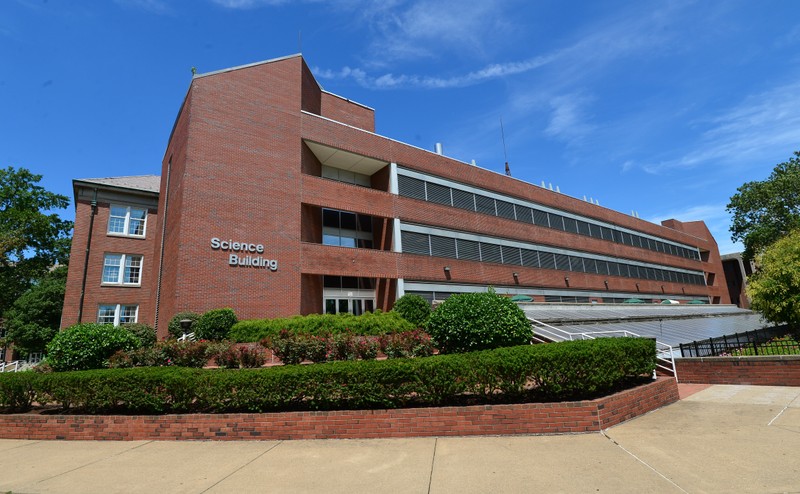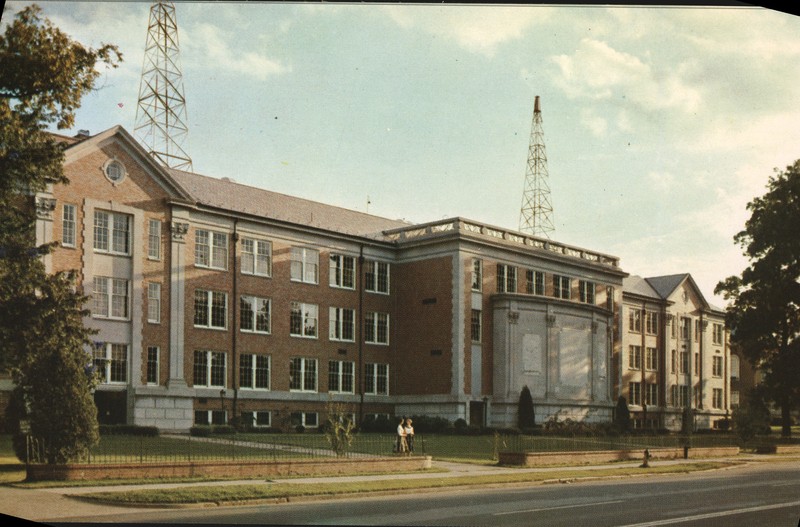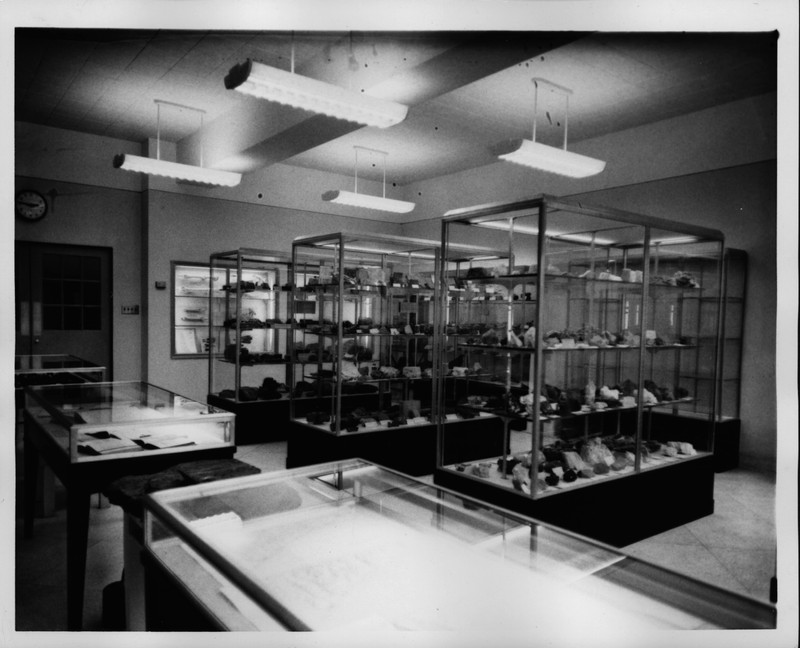Science Building, Marshall University
Introduction
Author-Uploaded Audio
Biology Professor Dr. Suzanne Strait narrates the history of the Science Building.
Text-to-speech Audio
Images
The southern addition to the Science Building was constructed in the 1980s and today is the main entrance for most students.

Postcard of the Science Building, north side, in 1960.

The stone bas-relief on the north side pays homage to famous scientists such as Thomas Edison and Benjamin Franklin.

A chemistry lab in 1950. At the time of its opening the Science Building featured state-of-the-art laboratories and other scientific facilities.

Displays, such as this geology museum on the third floor in 1950, were meant to provide scientific knowledge to the general student body.

Backstory and Context
Author-Uploaded Audio
Mike Kirtner remembers covering the Marshall Plane crash story from the WMUL radio station in the basement of the Science Building.
Text-to-speech Audio
The first facility at Marshall built specifically for the science departments was Northcott Hall, which was constructed in 1915 on the present site of Drinko Library. By the 1940s the building was too small to meet the school’s needs. The West Virginia legislature allocated funds for a new science building, but work was delayed by the outbreak of World War II. A dramatic increase in student enrollment after the war made the need for a larger building more urgent. Construction of the Science Building, originally dubbed Science Hall, began in 1948 and was completed by the fall of 1950. The four-story, brick structure cost $3 million. Unlike most of the other facilities on campus, the Science Building was never named after anyone. The most distinguishable physical feature was a large, stone façade on the north side containing portraits of Benjamin Franklin and Thomas Edison; it was also inscribed with the names of geologist Thomas Chamberlain, mathematicians Josiah Gibbs and Charles Steinmetz, and biologist Louis Pasteur.
Upon its opening the Science Building was the most modern building on campus, and boasted some of the most advanced scientific facilities of its time. It contained classrooms, offices, and laboratories for Physics, Mechanics, Optics, Physiology, Histology, Geography, Geology, Meteorology, Biology, Zoology, and Chemistry. It also featured men’s and women’s lounges, a science library, a geology museum, a herbarium, a telescope platform, and a radio station. The new facilities allowed Marshall to conduct a range of scientific studies, and it immediately began receiving research grants from various organizations. Marshall President Stewart H. Smith declared that the Science Building would create “an enrichment of instruction in the sciences and… contribute greatly to the development and expansion of the industrial and scientific progress of West Virginia.”
In 1983 the Science Building underwent a massive expansion and refurbishment to meet the demands of a growing student body and address the problems of an aging infrastructure. A new four-story addition was constructed on the south side, nearly doubling the building’s size. The original portion was also renovated to update the electrical system, plumbing, ventilation, and climate control. The new addition was initially completed in 1984 but it was not opened due to faulty ventilation and other safety concerns. The problems were not completely fixed until a final phase of renovations in 1989.
Sources
Casto, James E. Marshall University. Charleston, SC: Arcadia Publishing, 2005.
Gilkerson, Bobette. “Science move may cause lab shortage.” The Parthenon. October 12, 1983.
“Marshall Science Hall is Leader in Its Field.” Herald Advertiser. November 5, 1950.
Marshall University News. March 26, 1982.
“Marshall University Official History.” Marshall University. Accessed December 18, 2019. http://www.marshall.edu/muhistory/.
Mitchell, C. T. “Science Hall Improvement is Added to ‘Building Boom.’” Marshall Alumnus 18, no. 3 (September 1977): 16-17.
Moffat, Charles Hill. Marshall University: An Institution Comes of Age, 1837-1980. Marshall University Alumni Association, 1981. Accessed January 1, 2020. https://www.mds.marshall.edu/cgi/viewcontent.cgi?article=1008&context=lib_manu.
Science College. Standard Printing & Publishing Company, 1951. Marshall University Archives, Marshall University Special Collections.
Smith, Deborah B. “Science Building addition below par, BOR says.” The Parthenon. September 12, 1984.
Teel, Cora P. Letter to “Dr. Bird.” May 10, 1979. Marshall University Archives, Marshall University Special Collections.
Zeger, Jill. “The Campus, it is a Changin’.” The Parthenon. September 19, 1989.
Marshall University
Marshall University Special Collections
Marshall University
Marshall University Special Collections
Marshall University Special Collections
